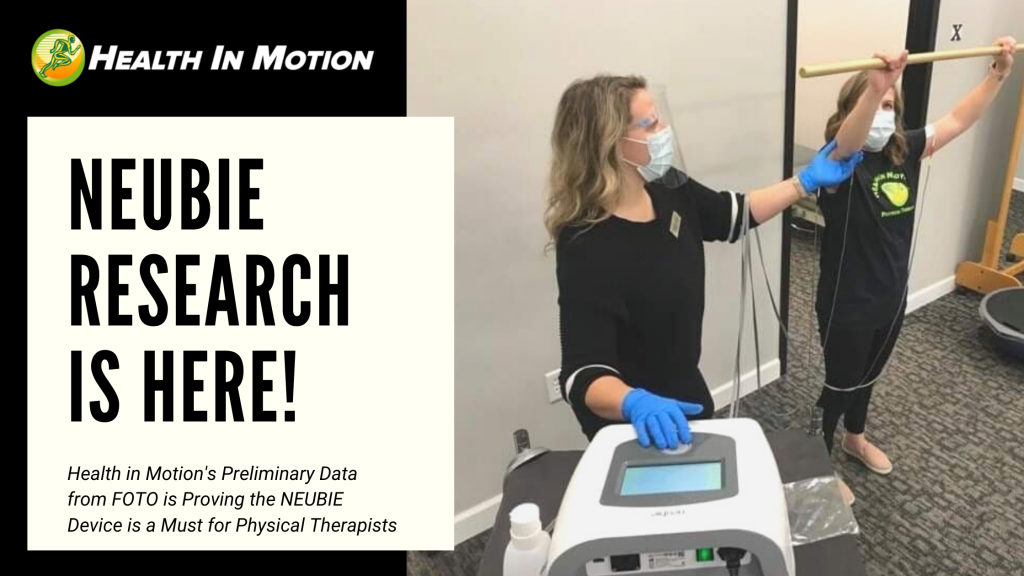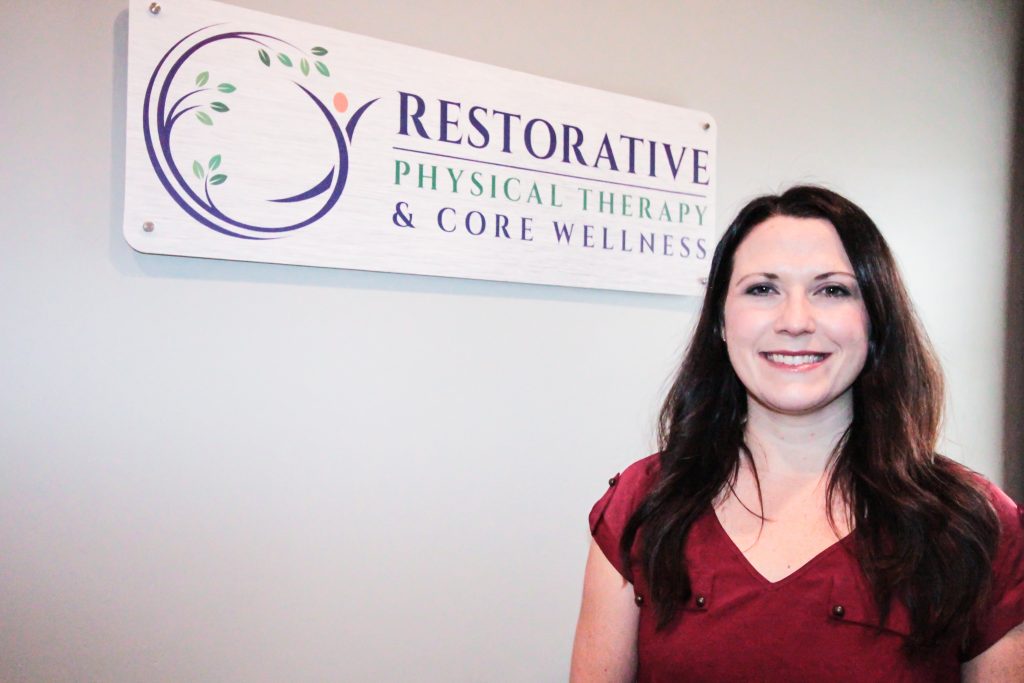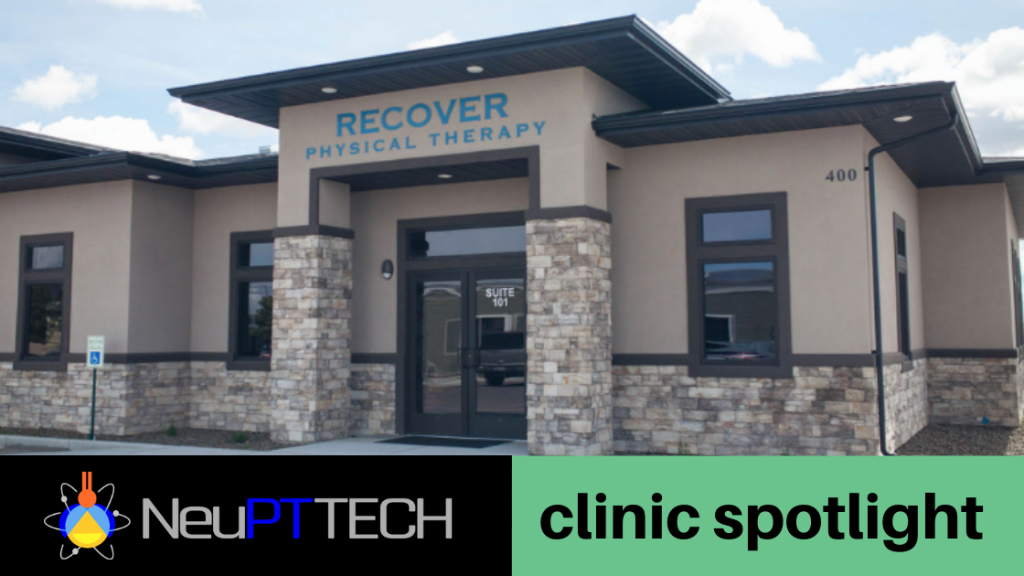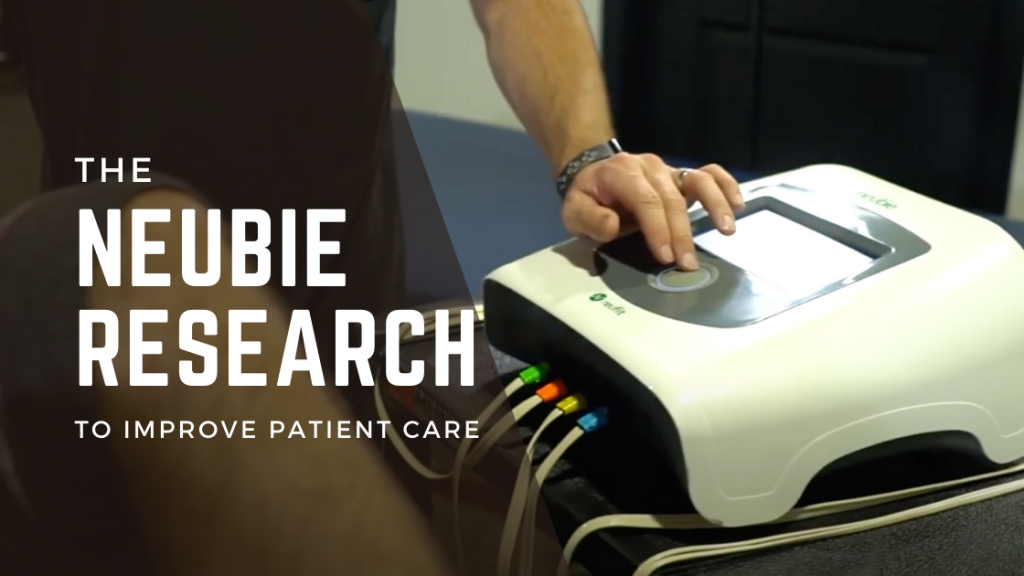
Physical Therapy Clinic’s Preliminary NEUBIE Research Shows ROI
“Does using the NEUBIE as a part of an entire plan of care make a difference on patient satisfaction or function?”
It’s the question most Physical Therapy owners ask when considering the NEUBIE device – but one clinic in northern Wisconsin took it a step further.
Meet Health in Motion, the PT Private Practice Tracking NEUBIE Results
“Tim and I are regular listeners to Brian Gallagher’s podcasts,” said Ben Solheim, a Doctor of Physical Therapy and leader at Health in Motion, a private practice with 8 locations across Wisconsin.
“Brian seemed quite excited about this new device called the NEUBIE, so Tim Thorsen, our CEO, got in contact with Jason Waz at NeuPTtech to learn more. After a thorough discussion, we were very interested, but skeptical – could it really be as good as they say it is?”
Nevertheless, Thorsen brought the NEUBIE back to their practice and handed it over to Solheim and his team with instructions to put it to work and see what happens.
Luckily, Health in Motion was no stranger to leading with the facts. As a practice, they were already performing above the national average and carefully tracking patient outcomes for years using FOTO (“Focus on Therapeutic Outcomes”), a national database focused on tracking real-time patient outcomes across physical therapy treatments.
Now, it was just a matter of tracking NEUBIE outcomes to see if it really delivers better, faster results than traditional treatments. Tim, Ben and their team set out to solve for the big question:
Is the NEUBIE Device As Effective As They Say It Is?
PTs ultimately pursue the same goal: to create positive outcomes for patients that manifest themselves in overall satisfaction, functional gain, and improved lifestyles – all as a result of our interaction with them.
If there’s a device out there providing value across all three of those elements, every physical therapist would want to know about it. Unfortunately, in 2019 when Health in Motion was introduced to the NEUBIE, all of the existing research and information was preliminary, anecdotal or theoretical.
“We wanted to see if this device could hold up to the stories told around it,” said Solheim. “So, we set out to measure the things we can measure – specifically, patient reported function and patient satisfaction. In short, our study would officially answer the question, ‘Does using the NEUBIE as a part of an entire plan of care make a difference on patient satisfaction or function?’”
Using FOTO for NEUBIE Research:
Health in Motion knew FOTO Patient Outcomes was the right vehicle to drive metrics for this study. As a patient reported outcome measure, similar to the Oswestry or Neck Disability Index, FOTO is currently used in over 12,600 clinics and by more than 23,700 clinicians across the globe, comprising over 9.5 million completed episodes.
What makes it special? Simply put, risk adjustment.
For example, a 17 year old softball player with knee pain is expected to functionally perform better than a 78 year old gardener with knee pain, right? The other indexes don’t adjust for that (or any other items for that matter). FOTO uses 11 different risk adjustment criteria to not only adjust expectations for patients, but also to predict where they would end up.
Patients are compared against a very similar group (all 11 criteria are matched) and clinics like Health in Motion receive the predicted averages of where patients started functionally, where they ended up, how many visits it took, how many days, and how satisfied they were with service. And, as another perk for patients, clinics are able to look at all of the patients in large groups – by clinician, clinic, practice, and region. These are compared to the national averages and a percentile rank is established.
Measuring Patient Outcomes to Prove NEUBIE Results
“We’re natural born skeptics,” said Solheim in regards to his team. “Our group has more of an evidence informed approach, so when we were given an opportunity for a lower cost ‘trial period’ of 3 months with the NEUBIE, we took it.”
Health in Motion set out to see what kind of results they could generate in a 3 month period of patient outcomes. 90 days later, the data was promising to say the least.
After Three Months of Results with the NEUBIE
In three months, Health in Motion could confidently report against three specific outcomes:
- FOTO’s “Functional Score Change” tracks how much function a patient regains during treatment. In the first three months, patients treated with the NEUBIE at Health in Motion measured over expected results by 50%.
- Health in Motion’s patient satisfaction was already far above the national average, measuring at the 70th percentile. Yet, when they added the NEUBIE to their treatments, the overall satisfaction of patients increased, placing them in the 80th percentile.
- Finally, Health in Motion looked at overall results of treatment. While patients with traditional treatments scored alongside the national average, patients who used the NEUBIE showed an incredible increase in overall results of treatment, ranking far beyond the national average.
Fast Forward a Year and Many NEUBIEs Later…
Health in Motion is closing in on the completion of their clinical study across a variety of variables and body regions like the elbow, cervical, knee, ankle/foot and lumbar with the NEUBIE.
“The preliminary data looks promising to say the least,” said Solheim. “We are looking at the body region of the spine right now because it will be the easiest to reach the number of cases needed to see if the data is valid or not.”
SPOILER ALERT! The results are becoming more and more clear every day!
“Treating patients with the NEUBIE is certainly in the lead,” confirms Solheim. “We just have to see if we have enough data to make that lead valid. It’s been incredible to see how many body regions this machine appears to be making a difference in across the board. The founders do say it treats a wide variety of conditions, and they seem to be right!”
Should Physical Therapists Use the NEUBIE in Their Practice?
So, what does Ben and his team have to say to Physical Therapists who are on the fence about bringing the NEUBIE into their private practice?
“Imagine seeing your patient get off the table after a really effective manual therapy treatment and they have a shocked look on their face like ‘what just happened that I can move this well now?!’ Or, what about how frustrating it can be when patients need solid exercise and strength to get better, but it’s clear that engagement is going to be a struggle because of the physiological ‘wait time’ necessary to make the neurological system more efficient prior to hypertrophic change? The NEUBIE delivers both: the WOW factor and patient engagement.
How the NEUBIE Affects Patient Outcomes
When pressed with the specific role NEUBIE played in these patient transformations, Solheim zeroed in on the NEUBIE’s ability to act as a neurological reeducation system, and ultimately, its own referral program.
“There is an immediate change for the better in ease of movement which creates those “Ah-ha!” moments with patients. The NEUBIE is able to hack the nervous system into fast tracking neurological efficiency making it a very valuable addition. Our patients know it and tell their friends, family, and co-workers. We saw our ROI on this machine long ago. The short answer is DO IT!”
It’s no wonder that Health in Motion have become such advocates of the NEUBIE and tracking its results with FOTO – Who else can objectively say their clinic is performing in the top 15% of the country thanks in part to the NEUBIE?
NeuPTtech is excited to share the full scope and outcomes of Health in Motion’s study once it becomes available later this year. If you’re interested in learning more now, please contact NeuPTtech.
About Ben Solheim and Health in Motion:
Ben Solheim is a Doctor of Physical Therapy with over 12 years of experience and multiple advanced specialty training certifications including Orthopedic Residency Training and Orthopedic Manual Therapy Fellowship through Bellin.
Health in Motion (HIM) is a private practice outpatient orthopedic physical therapy practice in central and northern WI for the past 27 years. They have built their practice on outcomes excellence, clinical quality, and patient first approaches. HIM currently has 8 clinic locations and 20 providers in the region. They have collected patient reported outcomes with FOTO (Focused On Therapeutic Outcomes) since 2014 achieving results in the top 15% of over 23,000 clinicians in North America.


 Previous Post
Previous Post Next Post
Next Post


